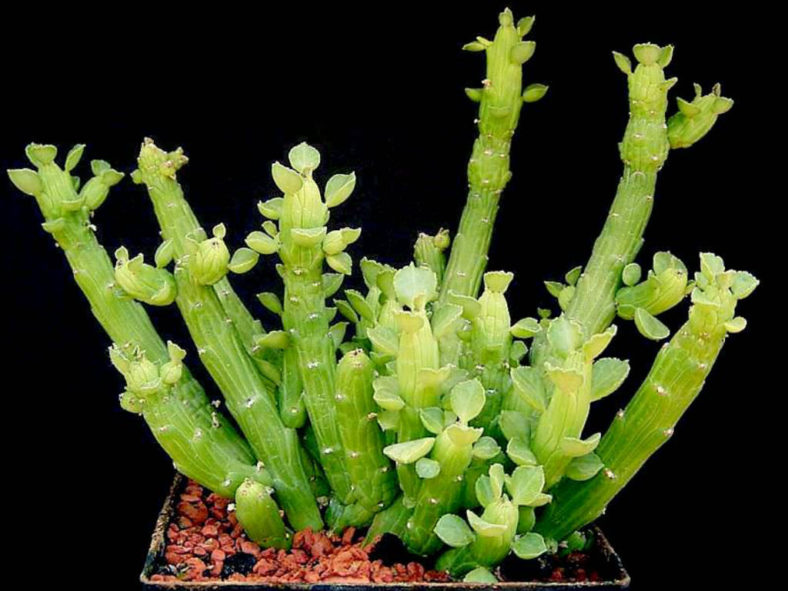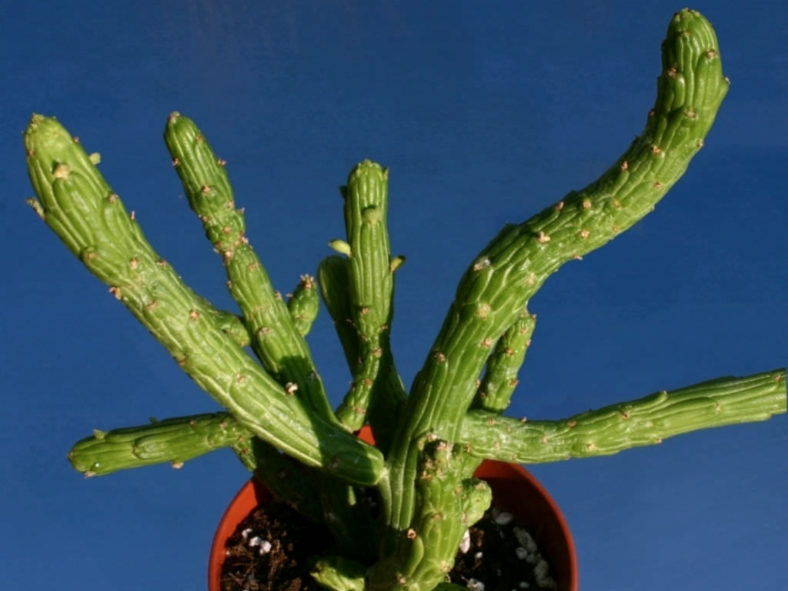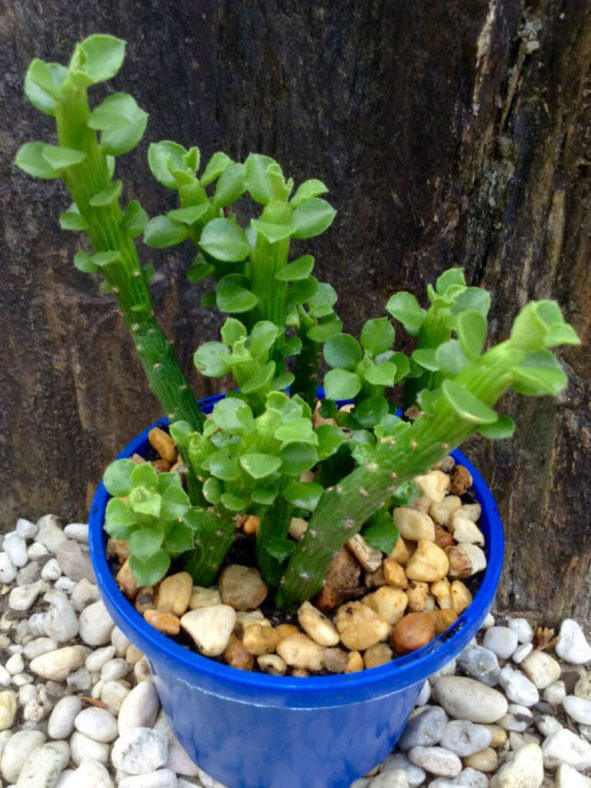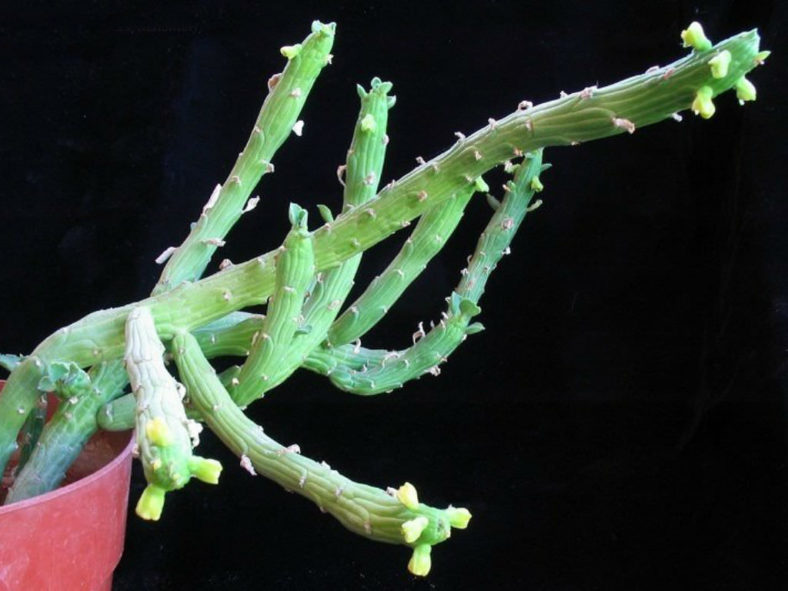Scientific Name
Euphorbia bisellenbeckii Bruyns
Common Name(s)
Octopus Arms
Synonym(s)
Monadenium ellenbeckii
Scientific Classification
Family: Euphorbiaceae
Subfamily: Euphorbioideae
Tribe: Euphorbieae
Subtribe: Euphorbiinae
Genus: Euphorbia
Origin
Euphorbia bisellenbeckii is native to Ethiopia, Somalia, and northern Kenya. It grows on rocky slopes, with open shrubs at elevations that range from 3,940 to 5,740 feet (1,200 to 1,750 m).
Description
Euphorbia bisellenbeckii, formerly known as Monadenium ellenbeckii, is a shrubby succulent with sparsely branched stems emerging from a thick, fleshy, shortly rhizomatous rootstock. The stems are erect or creeping, cylindrical, and can grow up to 32 inches (80 cm) long and 0.6 inches (1.5 cm) in diameter. They are pale green with four longitudinal grooves below each of the numerous spirally arranged leaf scars. The leaves are green, broadly ovate, and soon deciduous, measuring up to 0.4 inches (1 cm) long and 0.3 inches (0.8 cm) wide.
The small greenish-yellow cyathia with barrel-shaped involucres are produced near the ends of the stems. They can reach up to 0.6 inches (1.5 cm) in diameter and appear in summer. The fruits are obtusely 3-lobed, densely papillose capsules that contain pale brown seeds.

Hardiness
USDA hardiness zones 10a to 11b: from 30 °F (−1.1 °C) to 50 °F (+10 °C).
How to Grow and Care
Euphorbias are very easy to care for. These plants require a little pampering to become established, but once they are, they are self-sufficient. More die from too much care and watering than from neglect. Euphorbias need well-draining soil and lots of sunlight. They are not particular about soil H, but they cannot tolerate wet soil. Unlike most succulents, Euphorbia does not handle long periods of drought well. It may need weekly watering during the summer. Water whenever the soil is dry several inches below the surface. Water deeply, but don't let them sit in wet soil, which can cause root rot. Add some organic matter or fertilizer to the planting hole. Feed with a half-strength fertilizer monthly if you are growing them in containers or your soil is poor.
These succulents can be grown from seed, but they can be difficult to germinate (or even find). They are usually propagated by cuttings. This can be tricky because of the exuding sap. Rooting hormone is recommended with Euphorbias. They tend to grow problem-free, but a few pests and diseases are to be alert for.
See more at How to Grow and Care for Euphorbia.
Links
- Back to genus Euphorbia
- Succupedia: Browse succulents by Scientific Name, Common Name, Genus, Family, USDA Hardiness Zone, Origin, or cacti by Genus
Photo Gallery
Click on a photo to see a larger version.


